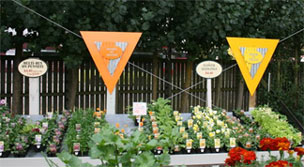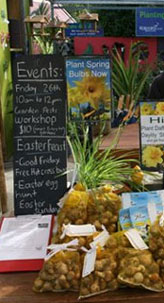How useful are they? Do you use a Mystery Shopping Service wisely as a management tool?
 Mystery shoppers have for many years been used as a tool to measure service standards and to a lesser extent other aspects of the retail store such as selling skills and shop presentation. The theory is you get an insight into your customer’s experience in your store on any day at any time
Mystery shoppers have for many years been used as a tool to measure service standards and to a lesser extent other aspects of the retail store such as selling skills and shop presentation. The theory is you get an insight into your customer’s experience in your store on any day at any time
In our industry, mystery shoppers are also used in several countries as part of the judging for excellence awards such as ‘Garden Centre of the Year’ and as part of industry accreditation programmes.
Like detectives, mystery shoppers can be viewed as covert agents that uncover poor customer service and poor customer relations, which when remedied, improve the shopping experience for customers.
Their advantage is they offer a unique form of feedback coming directly from your own customers; be it the quality of your customer relationship, the impact of promotional measures, consumer attitudes and expectancies or seasonal trends.
Results used positively, highlight people management issues, put service in the spotlight and can be very relevant when it comes to developing staff training in sales and customer care.
Mystery Shopping should also be used as a tool to motivate staff and as a diagnostic tool to identify strengths and weaknesses of your service model. It’s critical to monitor staff service delivery as 90% of unhappy customers leave a shop because they are fed up with inattentive, impolite staff.
So are you engaging a Mystery Shopping Service that is relevant to garden retail and are you using mystery shopping wisely as a management tool?
The value of mystery shoppers depends on:
- The brief they are working to.
- The understanding the mystery shopper has of the subject or industry,
- The number and frequency of mystery shopper visits
- The generation of reliable data by a well designed, well managed programme
The Brief
Requirements and criteria should be carefully considered by anyone involved in employing mystery shoppers. So often a brief is given by the garden centre owner based on what he/she thinks the customers want. It’s a good idea to hold focus groups of the different segments to fully understand customer requirements before writing the brief.
 Another trap is that those employing mystery shoppers accept the standard format of the Mystery Shopper Provider which gives no consideration to ‘garden customers’ shopping in a garden centre.
Another trap is that those employing mystery shoppers accept the standard format of the Mystery Shopper Provider which gives no consideration to ‘garden customers’ shopping in a garden centre.
Decide if you require qualitative or quantitative research. Qualitative research is used to get the range or attitudes present in a particular population and NOT to measure the prevalence of these behaviours or attitudes across the market as a whole. The results may not be statistically representative of the population being researched but they are sufficient to provide an indication of current practices in the garden centre sampled. Quantitative research involves much larger samplings representative of the market as a whole and is usually a more expensive process.
Mystery Shopping can fail due to poor population samplings from the population of stores or customers. It’s critical to both sample randomly and to sample from the population of interest, i.e. garden centre shoppers.
The Ability of the Mystery Shopper
Mystery Shoppers for garden centres should be chosen for the ability and understanding of garden retailing and their affinity with gardening. They should also be able to make enquiries from the point of view of a shopper.
Don’t choose a friend or one of your regular customers for the role. These people are not neutral observers. Choose individuals trained to experience and measure any customer service process by acting as a potential customer and being able to report back on their experience in a detailed and objective way.
The key to successful mystery shopping is having simple, believable scenarios for the shoppers to follow with plausible reasons for shopping. Wherever possible the shoppers should use their own personal circumstances because this helps them keep their story consistent and reduces the amount of specific information they have to remember.
Realise there is great potential for collecting biased data. Although this might not be critical for determining how many minutes passed between a mystery shopper entering your store and being greeted or approached by a sales assistant, it is critical for answering questions about customer preferences.
The Number and Frequency of Visits
 The average $/£/€700,000 garden centre has 24,000 customer transactions per year. One mystery shopper visit represents 0.004%. Four mystery shopper visits represents 0.016%. This is hardly enough to make judgement calls.
The average $/£/€700,000 garden centre has 24,000 customer transactions per year. One mystery shopper visit represents 0.004%. Four mystery shopper visits represents 0.016%. This is hardly enough to make judgement calls.
Perhaps an accumulation of mystery shopper visits at 4 per year over several years may give a platform but 20 customer service interactions per year covering most staff in an enterprise would be more use, particularly if it is to highlight service levels or people management issues.
If regularly used, Mystery Shoppers can help to take action and also help to develop marketing projects with the assurance of steady, neutral and unbiased feedback.
In conclusion, mystery shoppers can be a useful tool if:
- The brief is carefully considered.
- The shopper experienced, capable and has an affinity for gardening
- The frequency and number of visits are in the order of a minimum of 10 per year
- The mystery shopper service is used in addition to focus groups
- The results are used positively to improve the customer’s experience or the impact of promotional measures.
- Joy Lamb
